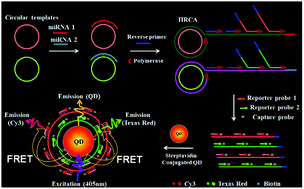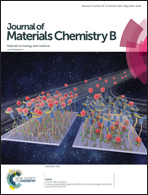Development of quantum dot-based biosensors: principles and applications
Abstract
Development of efficient biosensors for sensitive and selective detection of specific biomolecules is crucial to both fundamental biomedical research and clinical diagnosis. Due to their unique and superior optical and electronic properties, such as high brightness, good photostability, broad absorption spectrum, narrow and size-tunable emission spectrum, large Stokes shift, versatile surface modification, and distinctive photoelectrochemical activity, semiconductor quantum dots (QDs) have been regarded as promising and attractive building blocks for the development of efficient biosensors with high sensitivity, good selectively, rapidity and simplicity. In this review, we summarize the progress of QD-based biosensors in the last 5 years (2013–2018) including QD-based fluorescent, bioluminescent, chemiluminescent, photoelectrochemical biosensors, and focus on their basic principles and their applications for the detection of DNAs, microRNAs, proteins, enzymes, and living cells. Moreover, we give new insight into the future direction and challenges in the development of QD-based biosensors.

- This article is part of the themed collection: 2018 Journal of Materials Chemistry B HOT Papers


 Please wait while we load your content...
Please wait while we load your content...